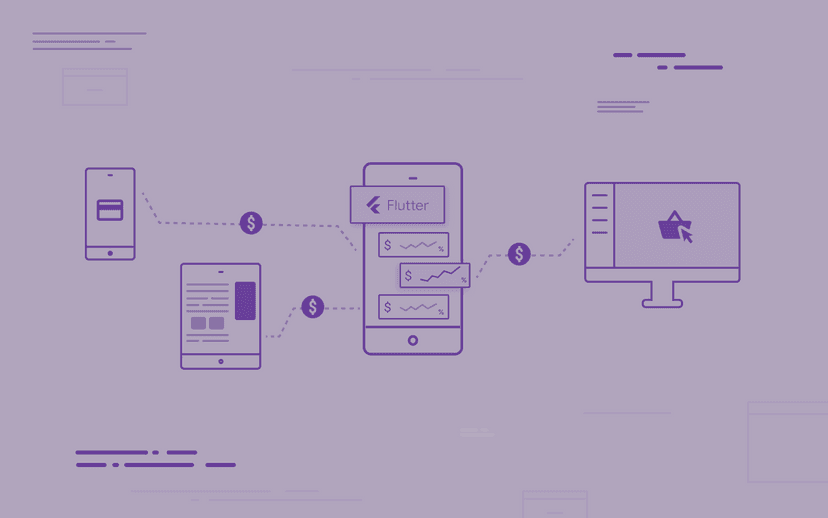
What is Proof of Concept in Software Development?
In the digital product design and development field, you often encounter the term “proof of concept” (POC). Usually, this term refers to a particular stage of function implementation, library, or algorithm usage. Today, we will cover this subject and explain how that solution will impact app development.
Table Of Contents:
- Proof of concept - definition
- Why is it worth implementing a PoC?
- When do we need a Proof of Concept?
- How to Create a Proof of Concept?
- Creating a PoC for your new application
Proof of Concept - definition
Let’s start with a basic description. Proof of Concept is a testing methodology allowing us to prove that our idea for a solution has a strong basis in reality. This attitude can save us a lot of time and money on unviable ideas that fail to recognize our client's needs.
Nowadays, markets fluctuate rapidly. Due to that, the initial idea to approach particular solutions may not stand the test of time. Instead of wasting a lot of money and energy on creating solutions designed for different market shapes, we can facilitate our job by conducting this simple procedure. That would ensure your product will reach your target audience.
Let us have a glimpse at the questions that proof of concept answers. That way, we will understand its usability more thoroughly during a project.
- What problem does the project touch?
- What is the project’s range?
- What technologies should cover the project’s needs?
- What are its timeframe and budget constraints?
- On what feedback from stakeholders can we count?
A common mistake occurs when comparing PoC with Minimal Viable Product or a Prototype. We should note that those terms are pretty much interconnected. However, they relate to different stages of project development, thus serving various purposes. Let us now look at each of those terms and recognize the differences between each other.
The difference - Minimal Viable Products versus Proof of Concept
A minimal viable product (abbreviation - MVP) is an early product that includes crucial functionalities. It aims to gather early feedback from customers, which results in the development team can implement viable solutions following the market’s needs.
The MVP is a product already available on the market and generates basic income. It also possesses a modular structure to facilitate changes required to improve the product.
In short, PoC is an idea for a solution, whereas MVP consists of such ideas’ realizations.
Proof of Concept versus Prototype
The main difference between a PoC and a prototype lies within their development stages. The PoC is an element of the initial stages of a project, with the prototyping process following it.
That is due to the aim of both project stages. PoC seeks to prove the project’s feasibility, whereas a prototype checks out the visual realization of the idea.
Last, the prototype uses the ideas behind the PoC and implements the most viable tools to create a rough model of an application. It determines the UX path for software - from structure to functions and user flow.
Why is it worth implementing a PoC?
PoC is a solution that ensures you and your stakeholders that the idea behind your application answers the audience’s needs. It is hard proof that you deliver a viable product that, in reality, boosts your business.
According to the PrintJury report, about 34% of new startups claim to fail because their product does not fit the market’s needs.
The primary purpose of Proof of Concept is confirmation whether the implemented solution would meet the stated objectives. This option allows for confirming the initial idea’s feasibility. The Proof of Concept creation also constitutes an opportunity to test the chosen technology to ensure its successful implementation. The result is a solution that can already fulfill its role - but often is still far from the target design.
Technical capabilities
The primary purpose of conducting PoC is to check out the project’s feasibility. That also includes our plan to implement particular technologies. Such a solution will ensure the most efficient usage of programmer tools to reach target goals.
Reality-based data on a product’s limitations
Every idea has its advantages and downfalls. Checking out your product’s constraints at the early stages of development is a stellar way to control the whole process. That way, we can choose an optimal path to release a stable, refined application.
Efficient budget management
Proof of Concept is a solid base that enables managing your company’s budget rationally. It gives your investors the confidence that the money meets their budget requirements. As such, we recommend creating a PoC, especially while implementing big-scale, costly projects.
Presenting the know-how of the app’s functionalities
A successfully implemented PoC is a stellar showcase of the ‘why’ and ‘what’ behind your project. Your investors need a piece of solid evidence to trust our party with their funds. The PoC is precisely that - a data-driven presentation of tools and incentives that justify the implementation of given solutions in the context of prevailing market conditions.
Faster application release
A PoC facilitates establishing a future course of action regarding the project’s whereabouts. The PoC methodology simplifies the identification of potential risks and proper adaptation to them. That way, we avoid unexpected situations that may affect the final product release.
When do we need a Proof of Concept?
PoC methodology proves extremely useful when the project involves innovative solutions not yet reflected by competitors. In addition, it is a powerful tool in the case of multi-stage implementations characterized by time consumption and a high level of complexity. PoC allows the elimination of misguided solutions, which translates into efficient management of time and money resources.
How to Create a Proof of Concept?
Following good programming practices and thorough documentation of the process is fundamental to creating a successful PoC. That should include detailed project requirements, objectives, and role assignation regarding the specialists partaking in the development process.
There are five steps to follow while creating a viable Proof of Concept. Let us enumerate and describe them to understand this complex topic thoroughly.
Determine the objective
An initial idea behind the project often comes from certain assumptions. To validate them, we need to change our approach into a data-driven one. That way, we have better control over the implementation process, which translates into creating a tool that serves its purpose in the fluctuating market.
Find an idea for a solution
Our next step is ideation. That stage requires close team cooperation. The most viable solutions are often the results of a well-conducted brainstorming session. In the IT field, we can tackle the problem from many perspectives. That is why proper mapping performed by experts in our field is so important.
Create a prototype
It is time to put our ideas into action! Our User Experience team finds the most suitable solutions for your application. A prototype includes several project aspects, the following:
- a user path,
- inclusion of all necessary features,
- UX and UI solutions.
We can run across such depictions shaped as a wireframe, a mockup, or even a sketch. That process aims to prepare your solutions for presenting them to your target audience.
Gather feedback - prototype testing
So far, the project stages have focused on internal activities. That stage is different, though. We recognize if our audience and stakeholders approve of how we plan to carry out our solutions. With that aim in mind, we show the prototype to both groups and record their impressions about it.
Prototype testing offers us data-driven feedback that helps to keep our application intuitive and user-friendly. We can also identify overlooked problems that could slacken further software development. This phase may undergo repetition several times to obtain optimal results.
Creating a roadmap
The last stage of the PoC creation process requires a thorough roadmap. That piece of documentation is a solid foundation for future application development. At the same time, it is also a coherent showcase that can facilitate negotiations with potential clients and investors.
Such a roadmap should include several elements. That includes:
- presentation of goals and objectives,
- a detailed description of solution development,
- perceived successes and final results.
Creating a PoC for your new application
Proof of Concept is a basis for successfully implementing functionalities crucial to the project. This methodology advantages innovative projects and brings many code-based and business benefits. As a data-driven source of feedback, PoC allows you to save businesses from pouring money down the drain.
Do you want to take advantage of the benefits brought by Proof of Concept solutions in your company? Take a look at Softnauts' offer on IT outsourcing.
And if you are interested in how you can increase the chances of your business in the market, see what our Software House Krakow has to offer!
Share this post:

Stay updated with new posts
Get notifications when new articles are posted. You can always unsubscribe from the list.
Softnauts is committed to processing the above information. Read Privacy Policy

